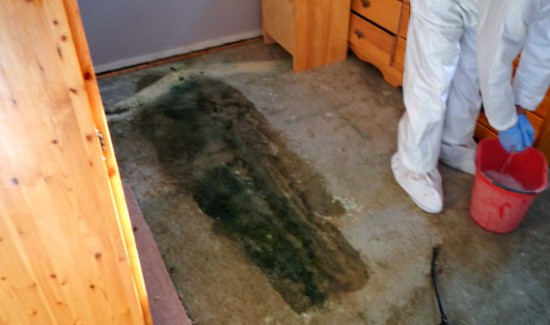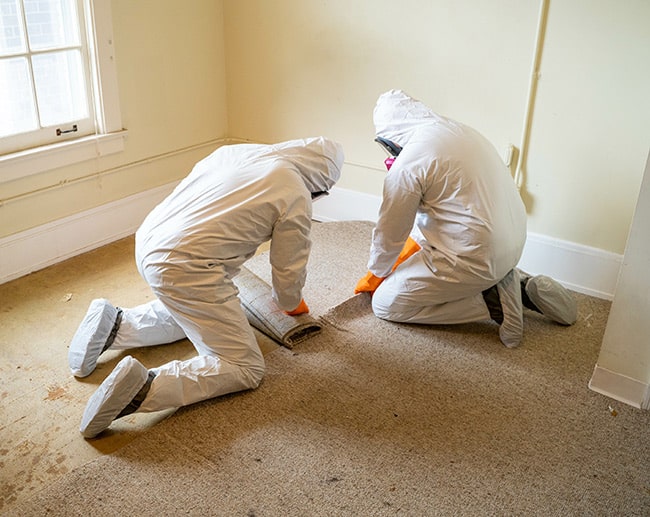Professional Blood Cleanup: Making Sure Safe and Thorough Decontamination
Professional Blood Cleanup: Making Sure Safe and Thorough Decontamination
Blog Article
Expert Biohazard Cleaning and Purification for Blood, Bodily Fluids, and Hazardous Products
In the world of biohazard cleansing and purification for blood, physical fluids, and unsafe products, accuracy and experience are paramount. The prospective wellness risks connected with exposure to biohazards highlight the important need for thorough handling and thorough cleaning. Specialized training gears up specialists with the expertise and abilities needed to resolve these unsafe situations successfully. However, it is not simply about cleaning up; the relevance of utilizing appropriate purification strategies can not be overstated. As we navigate the complex landscape of biohazard cleaning, comprehending the subtleties of regulations, compliance, and the specialized tools at play becomes necessary in guaranteeing a risk-free and complete decontamination process.
Health And Wellness Dangers of Biohazard Exposure
Exposure to biohazards positions considerable wellness risks that can result in extreme repercussions for people and areas alike. Biohazards encompass a variety of organic materials, consisting of blood, bodily liquids, mold, microorganisms, infections, and various other possibly contagious materials. When individuals come right into contact with these biohazards, whether with accidents, improper handling, or ecological exposure, they face the risk of contracting severe ailments or conditions.
Among the primary health and wellness risks linked with biohazard direct exposure is the transmission of contagious conditions. Bloodborne pathogens such as HIV, hepatitis B and C, and numerous microorganisms can be existing in biohazardous products, posturing a direct risk to human wellness. Breathing in air-borne biohazards like mold spores or entering contact with polluted surface areas can likewise bring about respiratory problems, allergies, and various other damaging wellness effects.
Additionally, biohazard exposure can have long-lasting health ramifications, with some diseases showing up years after the first call (Blood Cleanup). Consequently, it is vital to prioritize appropriate biohazard cleansing and purification to minimize these health and wellness dangers and ensure the safety and security of individuals and communities

Specialized Training for Biohazard Cleanup
When it involves handling biohazard cleaning effectively and securely, specialized training plays a basic role in ensuring appropriate purification procedures are followed. Biohazard clean-up needs certain knowledge and skills to efficiently alleviate dangers connected with bloodborne pathogens, physical fluids, and harmful materials. Experts learnt biohazard clean-up undertake extensive guideline on just how to securely handle, eliminate, and deal with biohazardous products to stop contamination and exposure.
Specialized training for biohazard cleanup covers a variety of necessary topics, consisting of correct personal protective tools (PPE) use, bloodborne virus awareness, purification strategies, and harmful waste disposal procedures. Individuals learnt biohazard clean-up are equipped with the required proficiency to analyze contamination levels, recognize potential threats, and execute suitable cleanup treatments in conformity with regulative standards.
Continual training and education and learning are vital in the field of biohazard cleaning to remain updated on the current decontamination technologies, security protocols, and regulations. By buying specialized training, biohazard cleaning specialists can efficiently reply to emergency situation cleanup circumstances and secure both public health and the atmosphere.
Importance of Correct Decontamination Methods
Utilizing correct purification strategies is vital in biohazard cleaning to efficiently get rid of unsafe products and lessen health risks. Effective purification not just ensures the removal of visible traces of blood, bodily fluids, and various other biohazards but likewise blood cleanup targets unnoticeable pathogens that might posture major health risks if not appropriately eliminated. By complying with stringent purification methods, trained professionals can considerably decrease the risk of direct exposure to hazardous bacteria, infections, and germs that can lead to infections or conditions.
Correct purification strategies entail using specialized devices and disinfectants that are particularly made to reduce the effects of biohazards efficiently. Thorough cleansing and sanitation of contaminated areas are important to stop the spread of virus and ensure a secure setting for owners. Additionally, the appropriate disposal of biohazardous waste following decontamination procedures is vital in avoiding contamination of various other surfaces or individuals.

Tools and Devices for Safe Cleanup
When dealing with blood, physical liquids, or hazardous materials, biohazard cleansing specialists count on specialized equipment to reduce exposure dangers and extensively decontaminate the damaged location. Additionally, biohazard cleansing sets consisting of anti-bacterials, absorbing products, and biohazard bags are utilized to securely have and dispose of infected products.
Advanced cleansing tools like hospital-grade anti-bacterials, HEPA-filtered vacuum cleaners, and fogging makers are employed to sterilize surface areas and get rid of biohazards effectively. Specialized equipment such as sharps containers and biohazard waste disposal bins are utilized to safely manage sharp things and biohazardous waste products. By using the best devices and tools, biohazard cleansing experts can ensure a complete cleaning process that focuses on safety and security and minimizes health threats for both workers and passengers of the damaged area.
Laws and Conformity in Biohazard Cleaning
Correct adherence to regulations and compliance requirements is paramount in biohazard cleansing to make sure the safety and security of both employees and the environment. Government agencies such as OSHA (Occupational Security and Health Management) and the EPA (Environmental Defense Company) have actually established details guidelines for biohazard cleanup treatments to decrease health threats and ecological have a peek at this website contamination. These guidelines cover an array of elements consisting of the handling, transportation, and disposal of biohazardous products, in addition to the necessary training and safety tools needed for workers included in the cleanup procedure.
Biohazard cleaning business should stay updated with these guidelines to guarantee that their operations satisfy the needed safety and security requirements. Failure to adhere to these guidelines can result in extreme consequences, including penalties, legal action, and endangering the health of individuals and the atmosphere. By complying with rigorous laws and compliance actions, biohazard cleaning firms can properly mitigate risks and ensure a osha biohazard cleanup training safe and extensive cleaning process for all parties included.
Conclusion
In conclusion, biohazard cleaning and purification need specialized training, correct methods, and adherence to regulations. Direct exposure to blood, physical fluids, and unsafe materials poses considerable health dangers, making it vital to utilize the right tools and tools for secure clean-up. By adhering to stringent protocols and guidelines, specialists can successfully mitigate the dangers associated with biohazard direct exposure and guarantee the safety and security of both themselves and others.
As we browse the elaborate landscape of biohazard cleaning, understanding the subtleties of guidelines, conformity, and the specific tools at play becomes imperative in ensuring a comprehensive and safe purification procedure. (Blood Cleanup)
When it comes to taking care of biohazard cleaning successfully and securely, specialized training plays a basic duty in making certain proper purification procedures are complied with.Utilizing correct decontamination techniques is essential in biohazard cleaning to properly decrease and eliminate unsafe materials health dangers. Additionally, biohazard cleansing kits containing anti-bacterials, absorbent products, and biohazard bags are used to securely consist of and dispose of infected things.
Federal government agencies such as OSHA (Occupational Safety And Security and Health Management) and the EPA (Environmental Protection Company) have actually established particular standards for biohazard cleanup procedures to lessen health dangers and ecological contamination.
Report this page